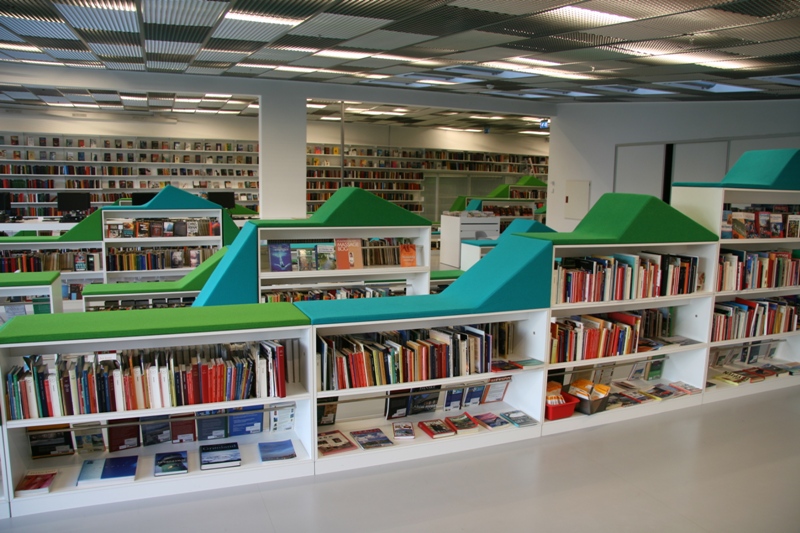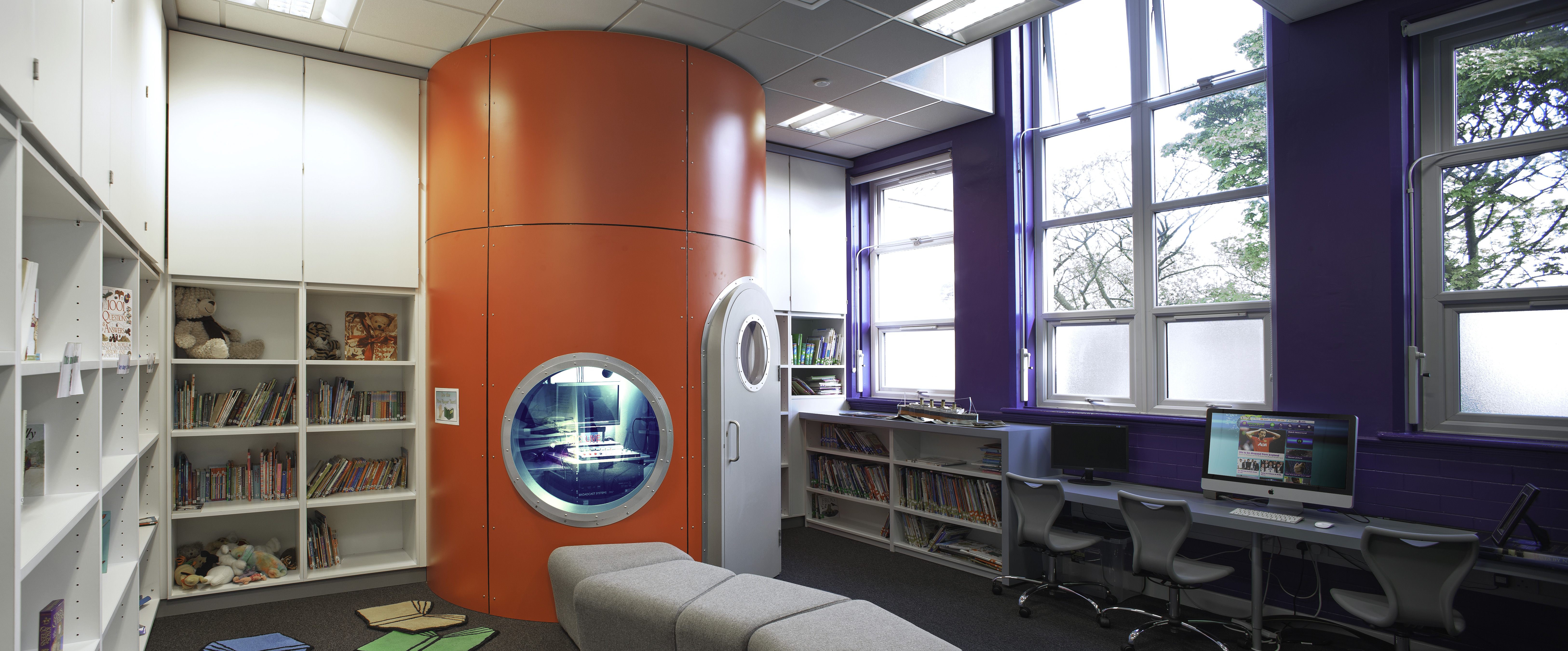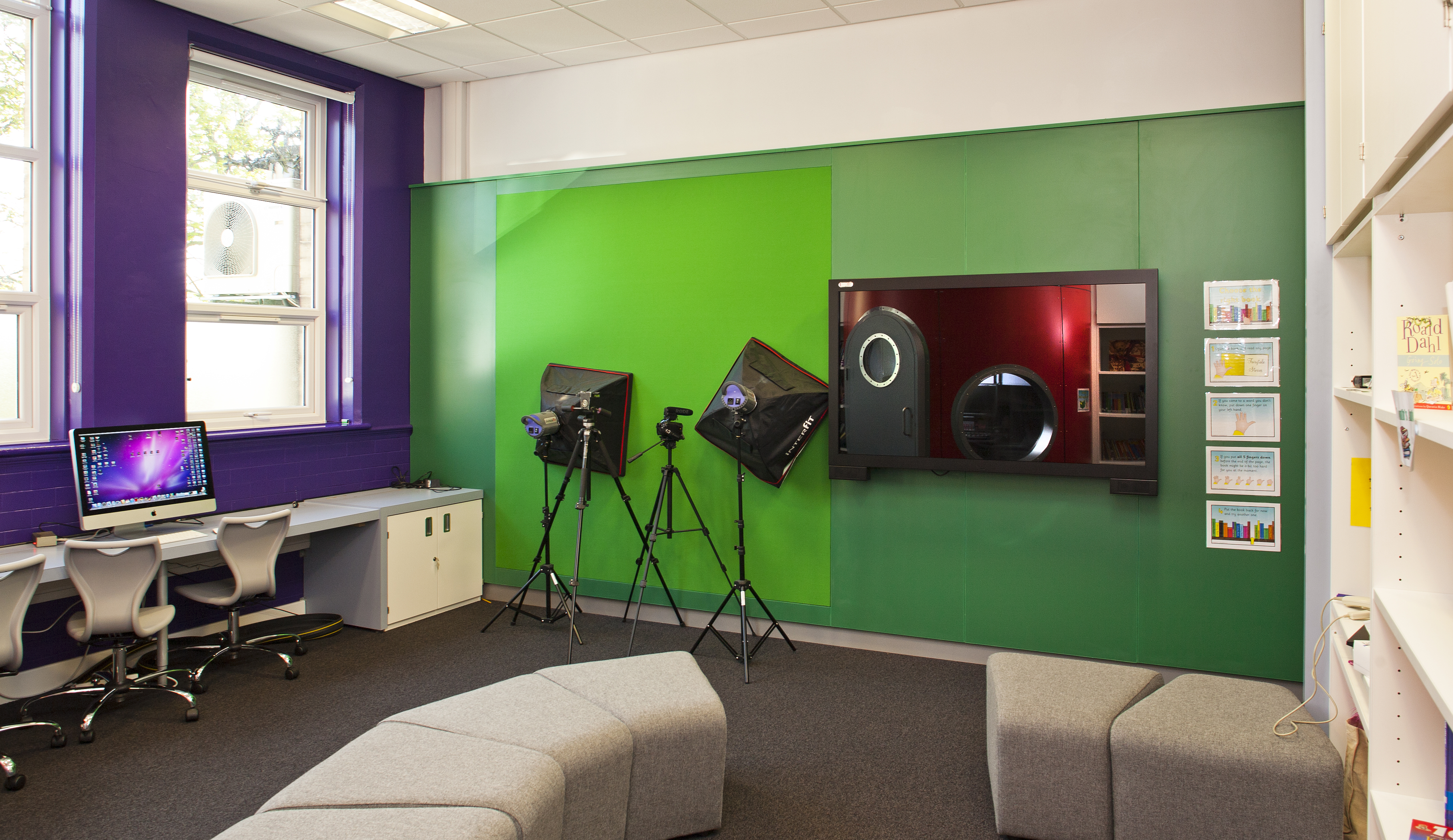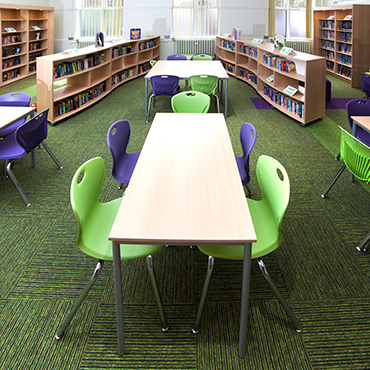What do Pupils need in their School Libraries?
Few of us need convincing about the importance of reading for students. Studies have shown that students who enjoy reading on a daily basis not only do well in reading tests but in addition, develop increased general knowledge, a broader vocabulary and a better understanding of other cultures.

Image Credit: Nord Architects/Ordrup Library, Copenhagen
Some studies have even demonstrated that reading for pleasure has more of an impact on how well a student does at school than their economic or social background. It is no wonder that the creation of a school reading culture is a high priority for so many educators.
So what makes a fantastic school library?
Location and Design
First and foremost, location is an exceptionally important factor in creating a successful reading area. Many schools will choose an unused classroom as this can offer a decent amount of space for what is required. Another option is to use an atrium or foyer – however, this has pros and cons. On the plus side, it can attract the attention of more students who are passing through, but it can also be a little noisy.

Remember too that access and circulation must be taken into consideration for a wheelchair-bound pupil or member of staff.
When designing the space, consider that colours and textures can impact moods and encourage appropriate behaviour – for more information on the ways in which colour can have an effect on student behaviour, take a look at this article.
Zones
You should divide your space into zones, creating spaces for browsing and reading that are age-appropriate. If the school caters for a range of ages, be sure to consider the children’s heights and created lower shelves for younger children.
If your budget allows, consider providing a variety of relaxing seating rather than tables and chairs – bean bags or soft rugs that a student can cosy up on.

Display boards are useful for promoting different titles; many books arranged together on the shelf spine-on can be overwhelming with so many choices and nothing to entice the pupil towards a particular book. Store away any books that you don’t have room for and rotate them regularly.
Make Your Library Stand Out
Libraries need to be colourful, inviting and enticing to be a success – and this means thinking beyond the books and looking at ways to attract the students’ attention.

Here are 10 ideas you could implement to make your school library a brilliant resource:
- Encourage the reluctant library user by offering quick choice, easy read fiction stock.
- Create a dedicated book promotion area.
- Encourage self-service: this will not only promote independent learning, but will also free up the Librarian’s time and allow him/her to spend more time with the pupils.
- Encourage the students to use the internet to find out about new books and suggest them for the library. You can then create a ‘Latest Books’ board with pictures of the most recent books added to the library, with ‘Suggested By….’ underneath each one.
- Ensure that the shelving system is flexible enough to be able to reconfigure for different uses of space.
- Make sure that the shelves are convertible from flat, spine-on to face-on display. This is particularly important when your library serves a mix of age groups; younger readers tend to have slimmer books, which are better displayed face-on, whilst older/more confident readers do not need the same degree of visual display and are happy to choose from spine-on books.
- Encourage parents into the library. Allow them to borrow books and promote reading at home.
- Run a photo competition over the summer holidays, asking students to provide a photo of them reading a book on holiday for the wall.
- Play music in the library during lunch and break times to make it feel like a more fun place to hang out.
- Create a ‘Book of the Month’ board.

With National Storytelling Week 2015 (January 31st to February 7th) fast approaching, there’s never been a better time to overhaul your school reading area and renew your students’ interest in books.


